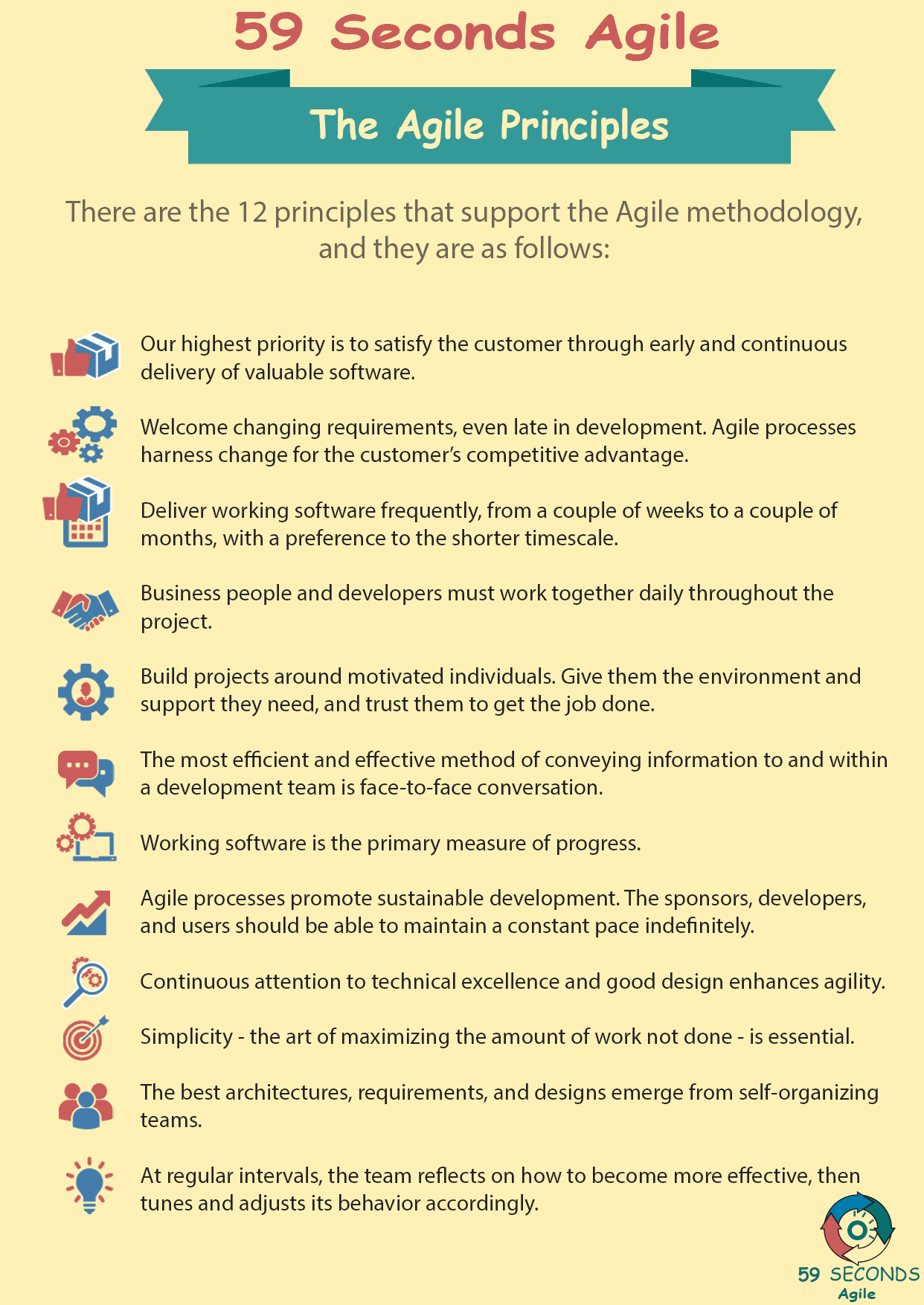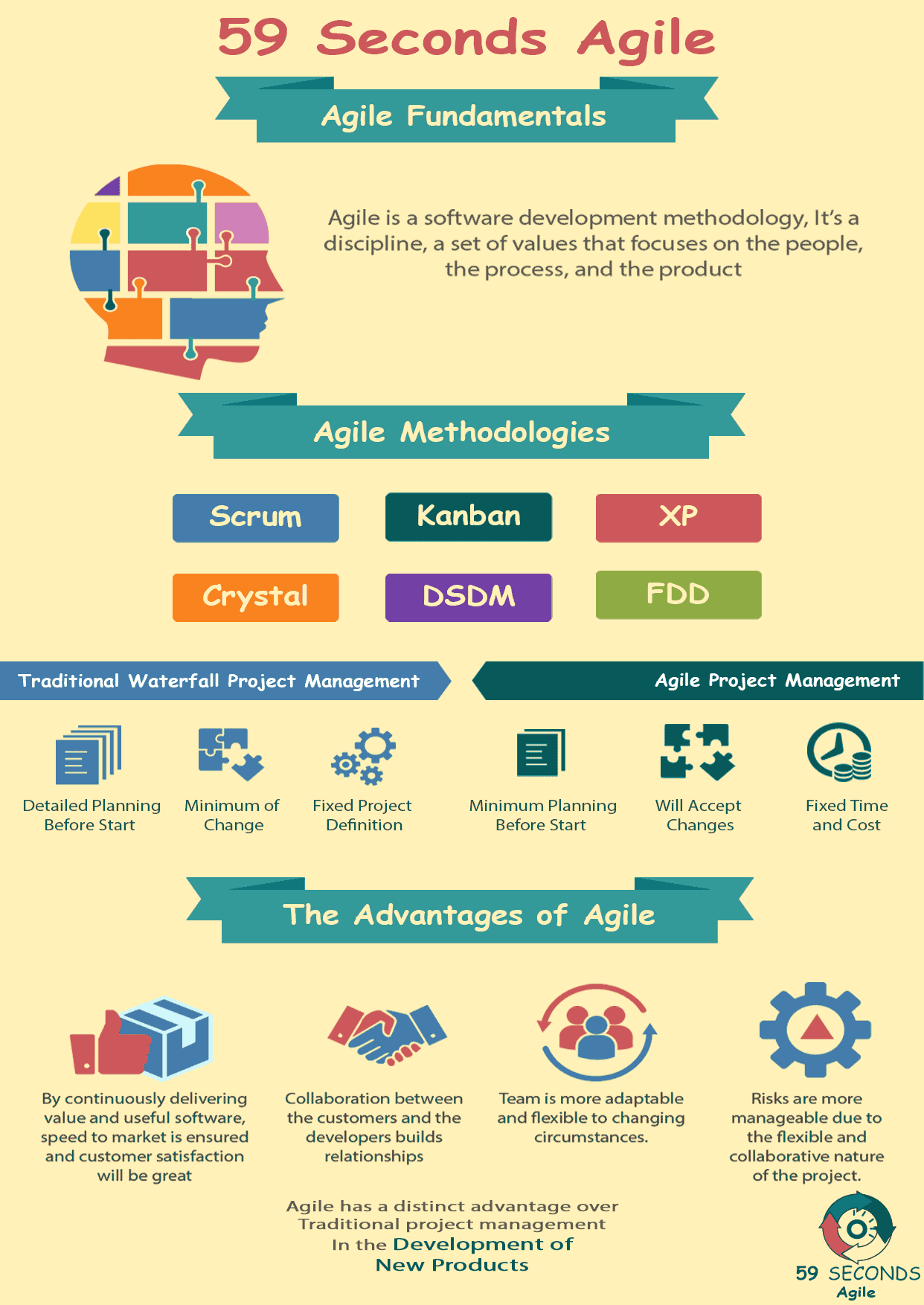This article looks to discuss the 12 Principles Behind the Agile Manifesto. Starting with the ‘Deliver working software frequently’ and moving on to discuss each of the 12 Principles.
The Agile Fundamentals
A 59 Seconds Agile Video Animation
12 Principles Behind the Agile Manifesto – Part 2
A 59 Seconds Agile Article
12 Principles Behind the Agile Manifesto: Deliver working software frequently
Deliver working software frequently, from a couple of weeks to a couple of months, with a preference to the shorter timescale
The development team has a preference to shorter timescale between the releases, with the current release being an improvement of the previous release.
While complying with the First Principle is the first big step in achieving customer satisfaction, there is another important aspect to factor in – the customer must be involved in and committed to the project. One of the four Values calls for “Customer collaboration”.
12 Principles Behind the Agile Manifesto: Work together daily throughout the Project
Business people and developers must work together daily throughout the Project
For the development team to ensure that they deliver a high-quality product, they must ensure that they work closely with the business people on a daily basis. This will help them collect the project requirements from them and identify any changes in terms of what they expect from the final product. Working closely with the business people is also good for testing of the product, and it will be hard for them to reject the final product, leading to project success.

12 Principles Behind the Agile Manifesto: Build Projects around motivated individuals
Build Projects around motivated individuals. Give them the environment and support they need, and trust them to get the job done. Once the customer accepts a deliverable, the development team feels motivated to work harder and improve the current release.

12 Principles Behind the Agile Manifesto: Build Projects around motivated individuals
Build Projects around motivated individuals. Give them the environment and support they need, and trust them to get the job done. This also helps to establish a close working relationship between the customer and the development team. Due to the closeness between the business people and the development team, support and feedback can be realized in the shortest time possible. This leads to faster development and more frequent customer feedback, hence an increased level of project success is often achieved within Agile projects.
Our Favourite Agile Books
We found these books great for finding out more information on Agile Scrum:
12 Principles Behind the Agile Manifesto: Face-to-face conversation
The most efficient and effective method of conveying information to and within a Development Team is face-to-face conversation. In agile, face-to-face communication forms the most efficient and effective method of conveying information to and within the development team. This approach helps the development team come up with solutions to the issues they face as quickly as possible, and they get more time to work on the project, leading to project success.
12 Principles Behind the Agile Manifesto: Working software is the primary measure of progress
In agile, the development team cannot progress to the next iteration unless the current iteration of the software is working and has been accepted by the users. These two factors are used to measure the success of each iteration. The development team then focuses towards releasing working software at the end of each iteration, and this finally leads to project success.
Prev <— Continue Reading —> Next
User Stories Applied
A 59 Seconds Agile Book Review
User Stories Applied by Mike Cohn is one of our favourite books on Agile User Stories. The book starts with an overview into user stories, and details what a user story is and the different aspects of them. He then discusses how to go about writing a user story, and provides details of the INVEST criteria that can be used to determine if the story is meeting all of its objectives. Next Mike gives an in depth discussion of who user stories are written for and where to begin when gathering the details for them. The book then discusses acceptance testing user stories, including how to go about specifying these criteria and the responsibilities of the development team and customers during this process.
Prev <— Continue Reading —> Next
Learn More
Agile Project Management Training Courses
Agile Fundamentals
A 59 Seconds Agile Infographic


